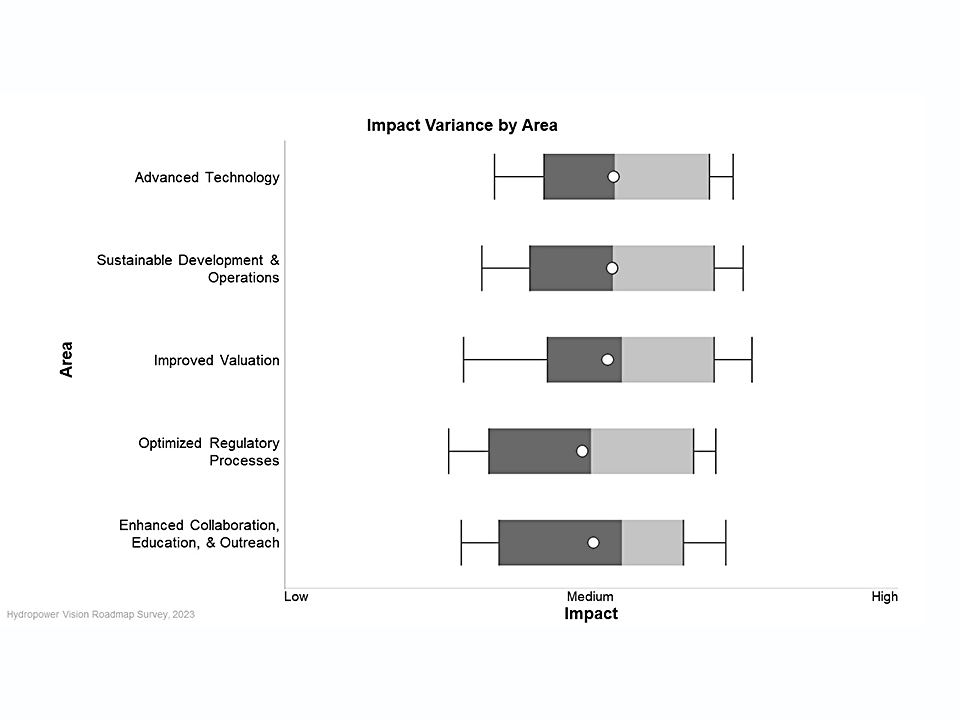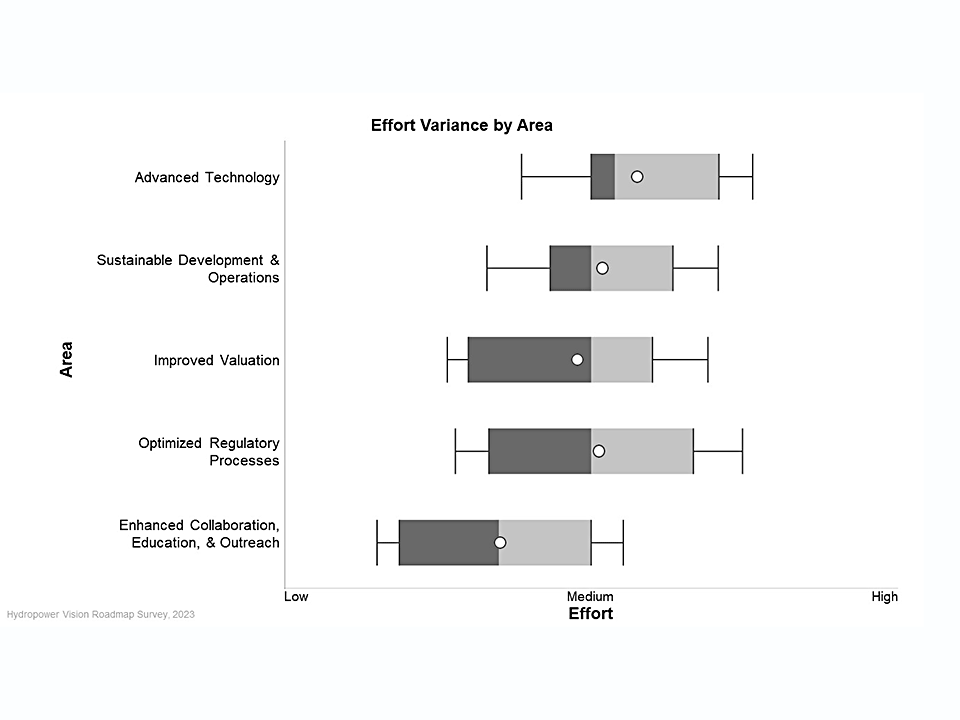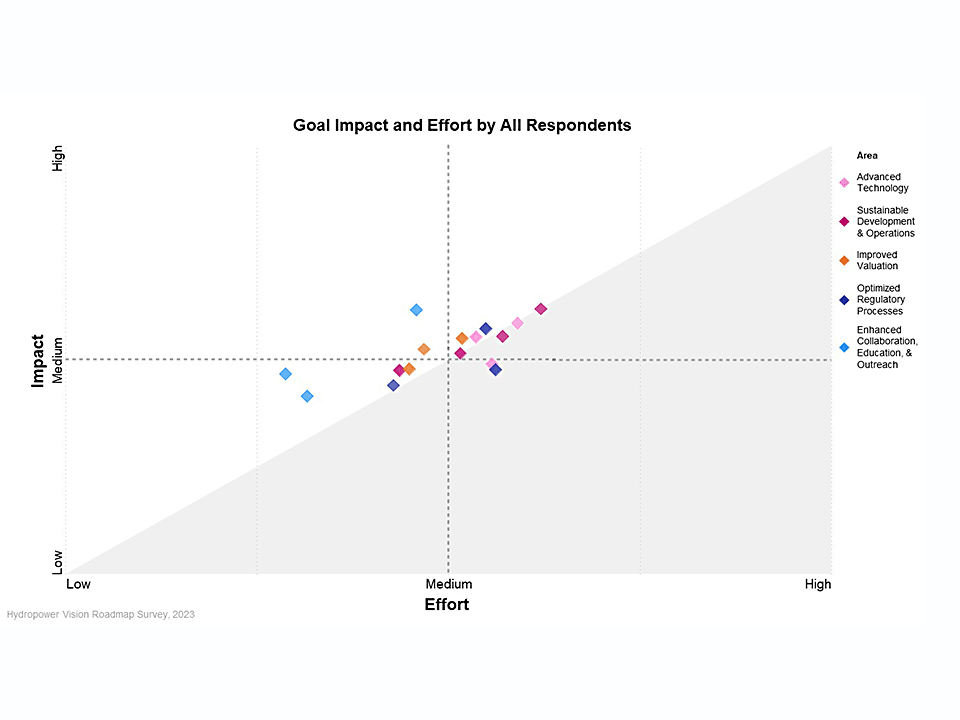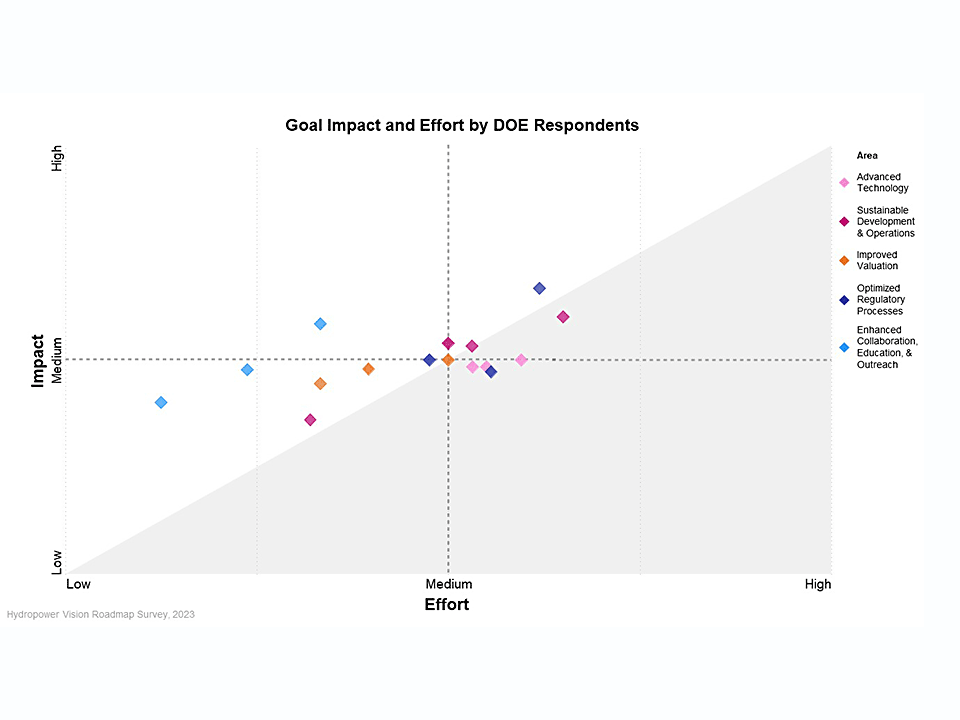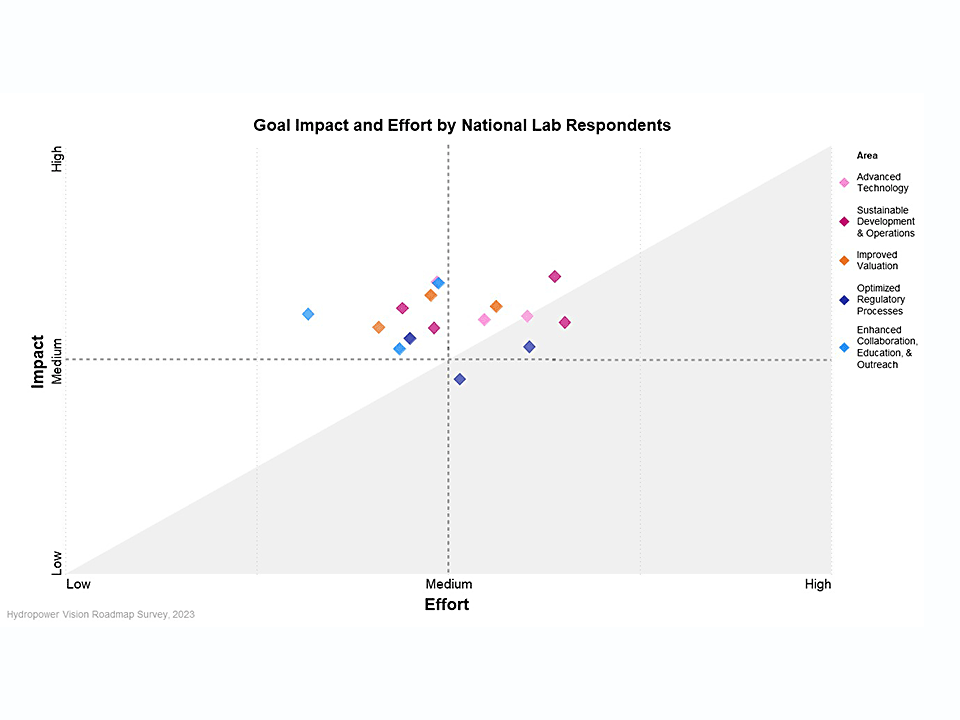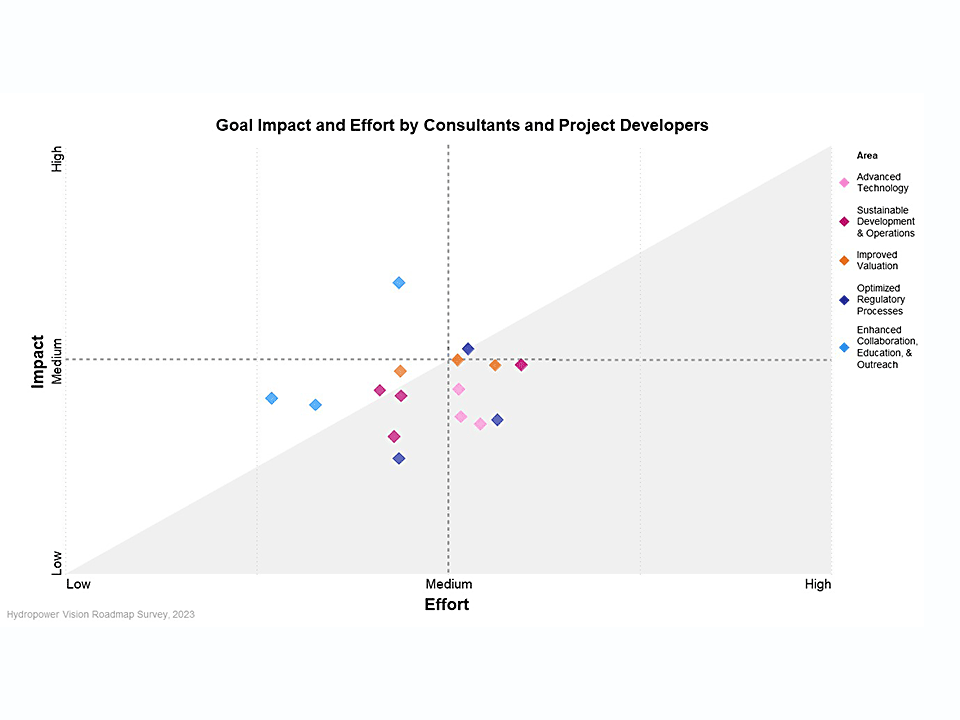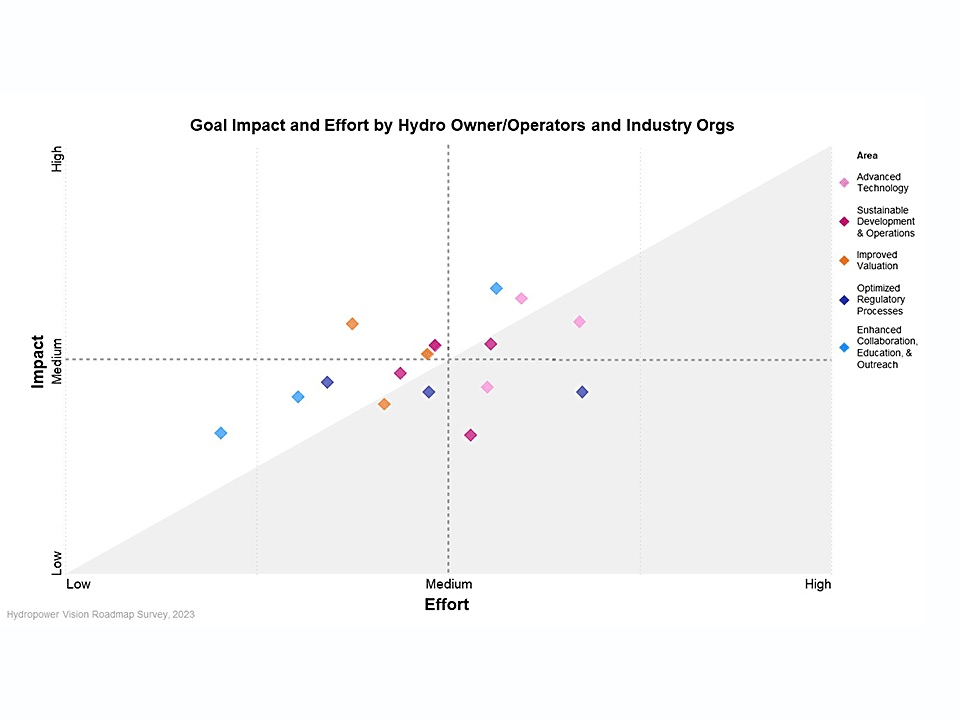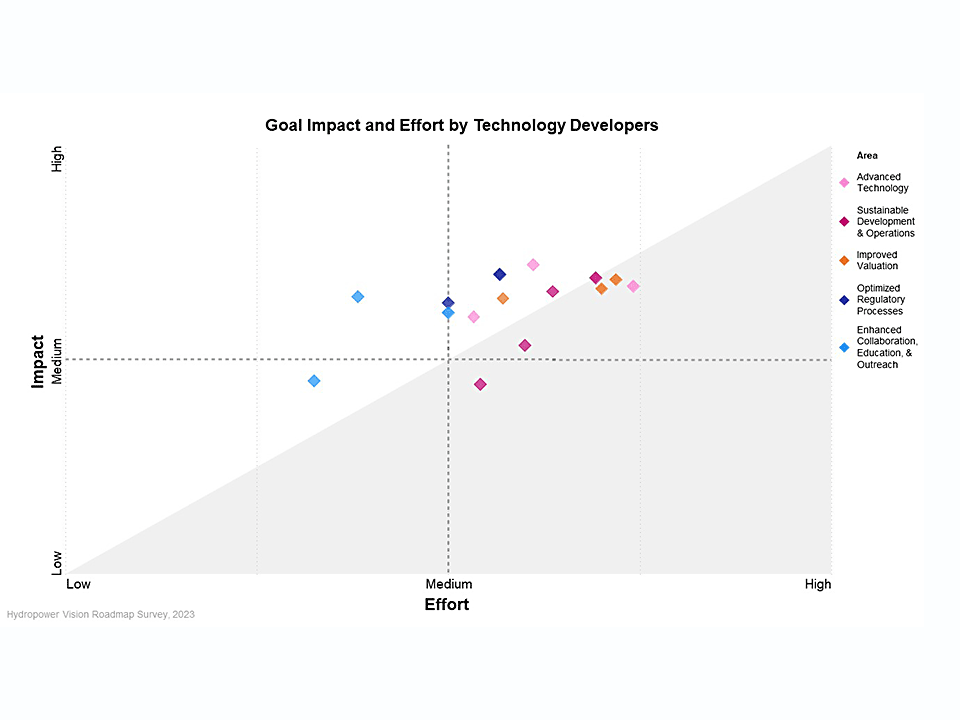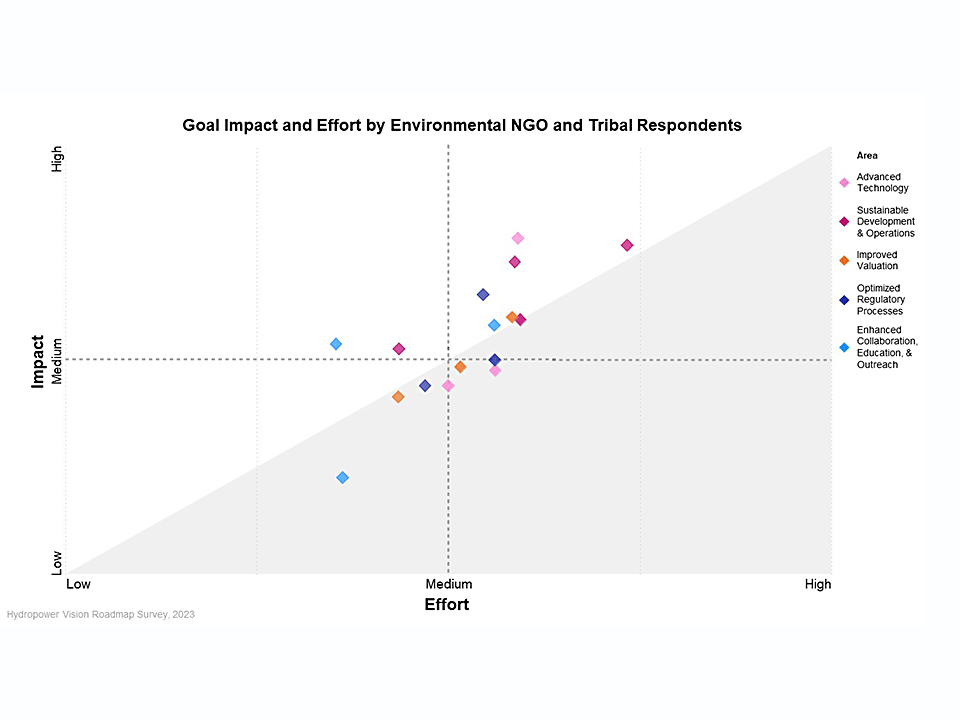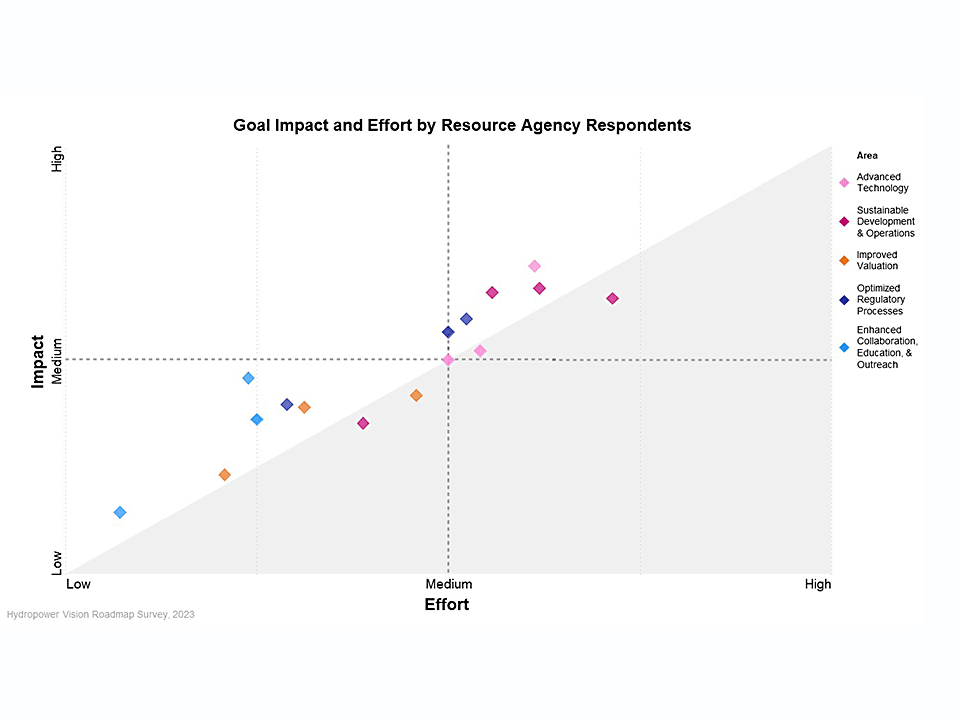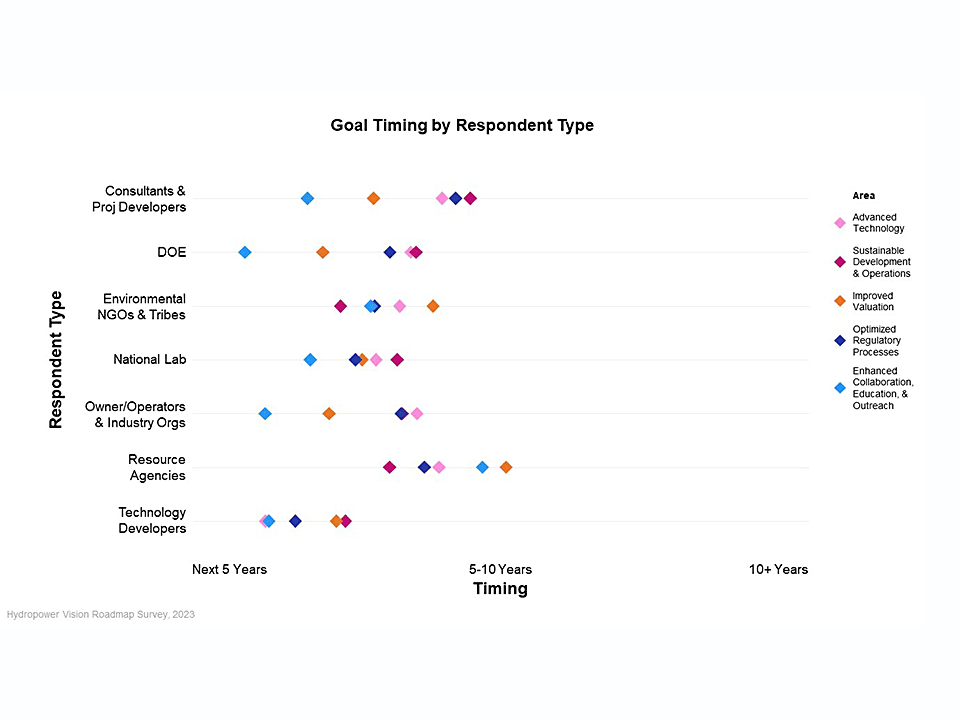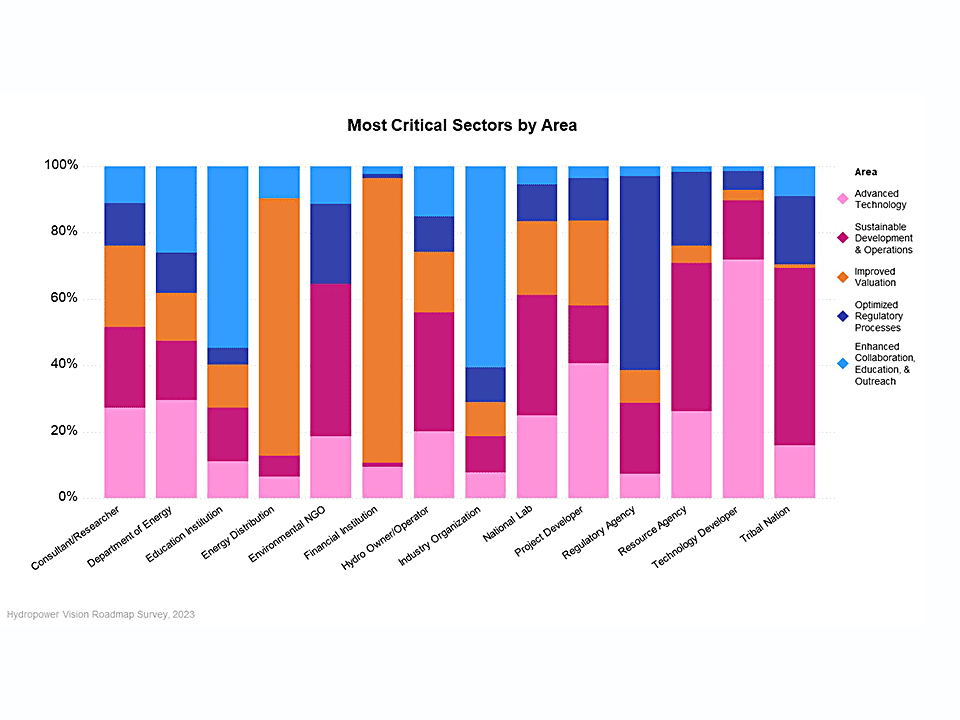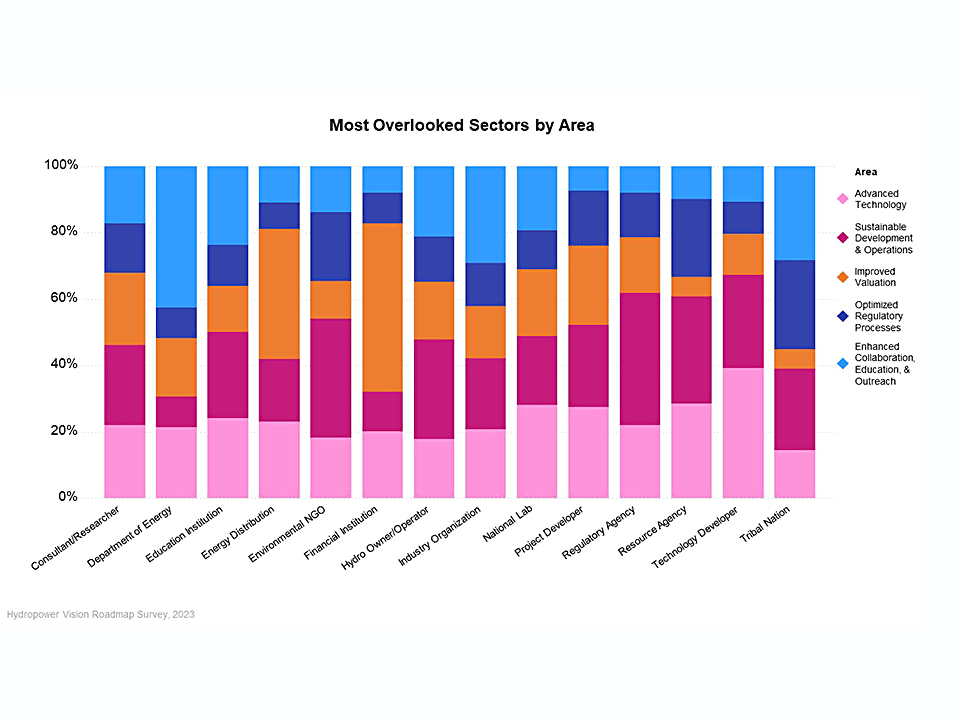The Original Hydropower Vision
Hydropower is one of the oldest sources of energy in the world and still provides approximately 6.2% of total U.S. electricity generation. But the energy landscape is rapidly changing.
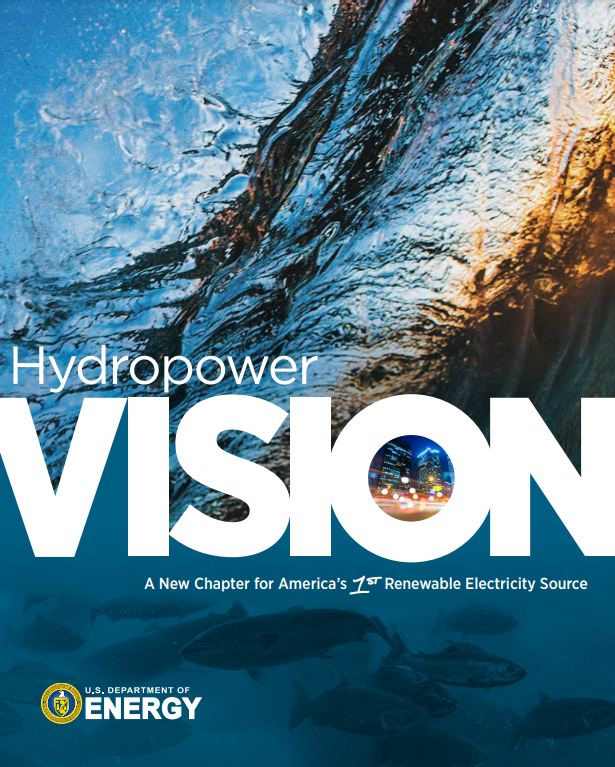
In the push toward a cleaner future, hydropower’s long history as a reliable source of renewable energy that stabilizes the grid can mean it’s often overlooked as a critical part of a secure, modernized grid. That’s why the U.S. Department of Energy (DOE) released the Hydropower Vision in 2016 to establish a new perspective on hydropower’s role in a clean energy future and create a roadmap to get there by 2050.
Developed with input from stakeholders in the hydropower community, the Hydropower Vision summarized the status and potential of hydropower in the United States. It also included a roadmap with the technical, economic, and institutional actions needed to optimize hydropower’s contribution to clean energy generation while preserving natural resources.
Learn more about the state of U.S. hydropower and its potential from the original report.
The Reimagined Hydropower Vision Roadmap
Since 2016, the structure and makeup of our electric grid, including generation sources, has continued to rapidly shift. New, reimagined goals for hydropower were needed to keep pace.

DOE, the Hydropower Foundation, and national laboratories once again engaged leaders in the hydropower community to reimagine the goals for 2050 and identify new priorities aligned with the changing times. Working with leaders and representatives across hydropower sectors, the team updated the goals in the reimagined Vision to reflect where hydropower is now and where the community would like to be by 2050. Over 100 individuals engaged in the roadmap development process, across 14 sectors, totaling over 60 hours of combined meeting effort.
The reimagined Hydropower Vision Roadmap centers on three key drivers: flexible operations, safe dams, and sustainable approaches. These goals fall within five action areas, including advanced technology, sustainable development and operations, improved valuation, optimized regulatory processes, and enhanced collaboration, education, and outreach. The specific goals in each action area act as important guides along the journey to reach the shared vision of hydropower’s future.
Building the Roadmap
The Vision for hydropower in 2050 isn’t complete without a clear roadmap that includes strategic goals and activities. The reimagined Roadmap was finalized in late 2023 after three years of extensive outreach and public forums with the hydropower community who informed its creation.
Engagement included virtual workshops and discussions leveraging interactive collaboration tools and a comprehensive survey to understand community needs and priorities for hydropower. Explore the Roadmap to learn more about the goals and activities that will meet these needs and shape modern hydropower by 2050.
Using the Roadmap
The reimagined Hydropower Vision Roadmap offers a holistic view of hydropower and its community’s needs. It provides a shared language and framework that can direct collaboration, community building, strategic planning, and progress tracking efforts.
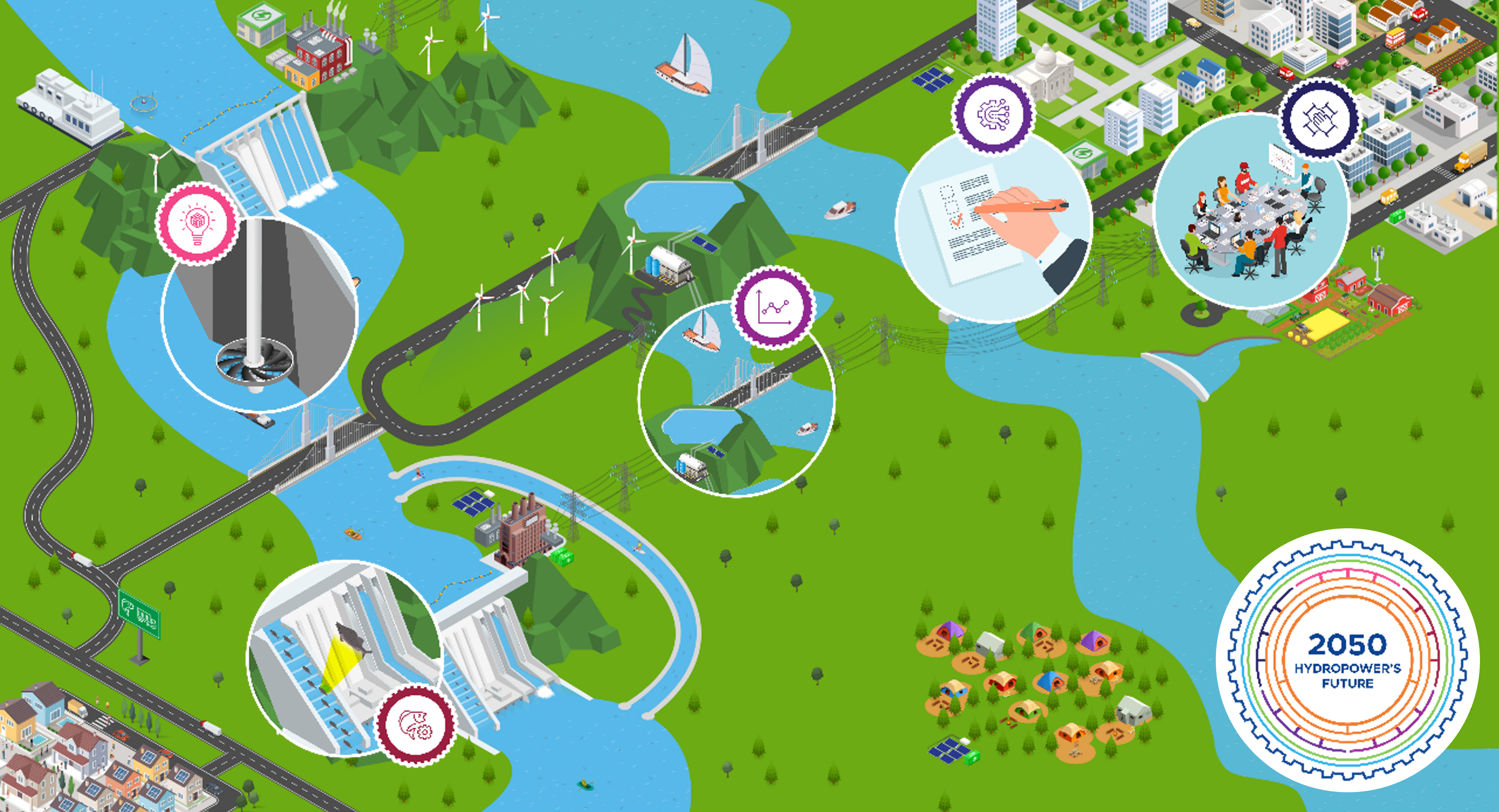
While the needs and priorities of different sectors may vary, all hydropower community members should see themselves in some aspect of the Vision. Community members can use the Roadmap to understand how their efforts fit within the broader Vision for hydropower, where their strategic mission overlaps with others, and what topics, issues, or stakeholders warrant further engagement.
As the hydropower community advances toward our modern Hydropower Vision through targeted discussion and action, the Roadmap will be a source of information about the ongoing efforts of others, a mechanism to track areas of progress and needed efforts, and a social network to make connections that advance our individual and collective Vision for a clean energy future.
Roadmap Survey
In summer of 2023, more than 90 members of the hydropower community participated in a survey to share their perspectives on the activities developed for the reimagined Hydropower Vision Roadmap. Participants in the survey responded to questions about the impact, effort, and timing of each identified activity. They also shared their views on which the sectors of the hydropower community are most critical to successfully completing these activities, as well as those sectors that are most overlooked in current activities. The specific survey questions included:
- What is potential impact of this activity?
- What is the level of effort (resources and time) needed for this activity?
- When should this activity be completed for maximum impact?
- Who is critical to the success of this activity?
- Who should participate in this type of activity but is usually overlooked?
Scroll through the images below to see the results for the overall Roadmap. Results for specific areas can be found on their individual pages under the Roadmap menu.
Below are highlights from the survey results that correspond with the images above.
- Impact Variance: When averaged, survey respondents ranked the impact of Roadmap areas similarly. The Optimized Regulatory Processes and Enhanced Collaboration, Education, and Outreach areas were ranked slightly lower in impact than other areas.
- Effort Variance: Respondents ranked the effort for Advanced Technology and Sustainable Development and Operations Roadmap areas more consistently than other areas. The Enhanced Collaboration, Education, and Outreach area was ranked less consistently and lower in effort than other areas.
- Timing Variance: Respondents consistently suggested short timeframes for goals in each Roadmap area, but respondents showed least consensus on the timing of goals in the Improved Valuation area.
- Overall Impact and Effort: Overall, the Enhanced Collaboration, Education, and Outreach area was ranked as requiring significantly less effort than other Roadmap areas. The Enhanced Collaboration and Advanced Technology areas were ranked as providing more impact per level of effort than other Roadmap Areas. Goals in the other areas varied by whether they provided more or less impact per level of effort.
- Impact and Effort by Sector: Overall, Resource Agencies provided a larger spread of impact and effort rankings than other respondents across Roadmap areas and goals. That said, both Resource Agencies and DOE ranked most Roadmap goals higher in impact than their level of effort. In contrast, Consultants and Project Developers ranked most Roadmap goals as more effort than their level of impact.
- Area Timing: Respondents suggested similarly long timeframes for goals in the Sustainable Development & Operations and Optimized Regulatory Processes areas. Results were similar for the Advanced Technology area, but Technology Developers suggested significantly shorter timeframes. Respondents tended to provide different timeframes for goals in the other areas, including Resource Agencies who suggested Enhanced Collaboration and Improved Valuation required longer timeframes than any other area.
- Critical Sector: Respondents cited Technology Developers and Project Developers as most critical for the Advanced Technology area. For Sustainable Development and Operations, respondents cited Environmental NGOs, Resource Agencies, and Tribes as most critical. Energy Distributors and Financial Institutions were cited as most critical for the Improved Valuation area. For Optimized Regulatory Processes, Environmental NGOs and Regulatory Agencies were seen as most critical. Finally, Education Institutions and Industry Organizations were seen as the most critical for Enhanced Collaboration, Education, and Outreach.
- Overlooked Sector: Survey respondents ranked overlooked sectors similar to critical sectors. That said, respondents highlighted some other sectors that need more involvement, including increasing Resource Agency involvement in Sustainable Development and Operations, Tribes in Optimized Regulatory Processes, and DOE and Tribes in Enhanced Collaboration, Education, and Outreach.



